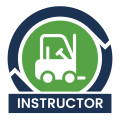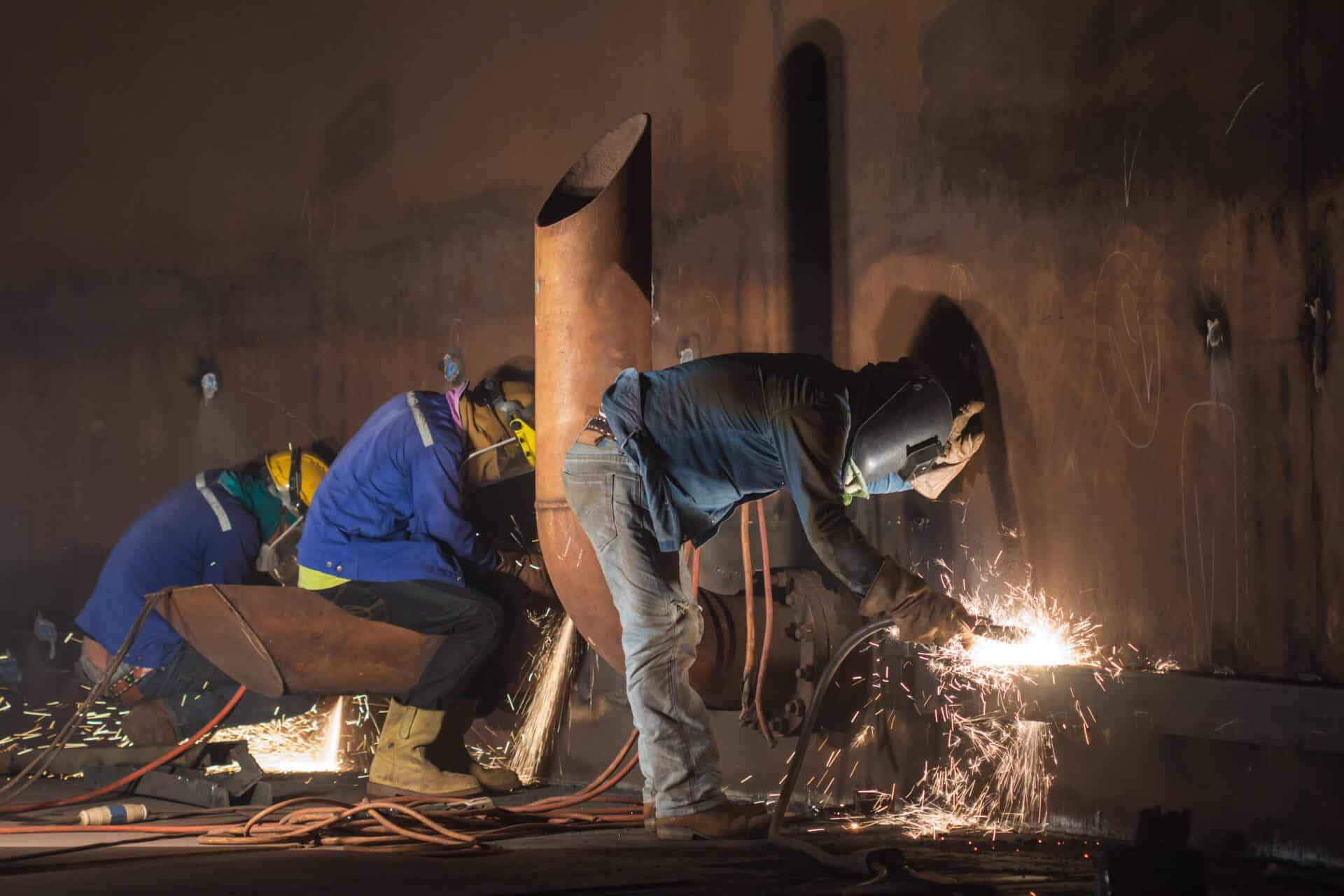Forklift Instructor Training

- In Person
This program will provide instructor candidates with the knowledge, skills, and materials to deliver a diligent and engaging Forklift Training session.
Program Outline
- Day 1 Forklift
- Day 2 Instructional Skills
- Day 3 Instructional Skills
Upon completion of this program, instructor candidates will receive:
- 12 Student licenses
- Instructional skills workbook
- Forklift lesson plans/answer keys
- Forklift instructor certification valid for 3 years
Forklift Technical Foundation
These additional knowledge components of instructor development will get instructor candidates to go deeper with their theoretical knowledge and practical skills.
This course covers the following topics:
- CSA B335 Safety Standard for Lift Trucks.
- Mobile equipment anatomy and functions
- Deeper skills practice
- Workplace-specific mobile equipment situations
- 12 licenses & manuals included
- 24 hours of program instruction
- 3-year instructor certificate duration
- 2 Certificates
- Forklift certificate
- Forklift Instructor certificate
- 12 Student Licenses
- Instructor kit
- Lesson plans

- Day 1 Forklift
- Day 2 Instructional Skills
- Day 3 Instructional Skills
Getting & maintaining certification
Our fall protection instructor course aims to set a high standard of training by requiring active engagement and effort from every instructor candidate. To obtain and maintain certification as a fall protection instructor, you will be required to complete the following actions:
- Teach 3 classes per year (minimum)
- Adhere to the instructor code of conduct
- Pass all practical and theory components of the training program
- Recertify every 3 years or when the minimum course teaching frequency has not been met
1. You don’t. Well. almost. Aside from the initial set of licenses as part of the instructor training program, there is no obligation to purchase any more. 2. But… if you do, this program is built around delivering our proprietary courses. As such, we must ensure the quality and consistency of training materials. License sales also help us fund improvement of the existing course.
- OHS Regulatory changes and incident statistics
- CSA Standards changes
- Best practices for learning activities
- Ways to improve the learner experience
You can, however, are also required to get these as part of the instructor program.
Here’s why:
- Increased instructor confidence. An instructor may feel better prepared upon leaving the program if they have 100% of the materials required to teach.
- Increases legitimacy of the course. Some courses do not provide ANY resources to the instructor. These courses don’t have the same level of respect in the industry, and students are often caught off guard once they realize that designing a training course involves a very different set of skills than delivering a course.
- Increase preparedness. Having the licenses on-hand allows the instructor to start teaching as soon as the very next day. We know from experience that it’s best to teach as soon as possible after being trained to quickly improve competency and confidence.
What do I get with each student license?
Unique serial number linked to the student and issuing instructor in the CMP
Student Manual
Final exam booklet
Digital training certificate (PDF) issued through the CMP with QR-code verification
Temporary certificate for same-day jobsite proof (if needed)
The following comprise the MINIMAL equipment required.
- One 4-gas monitor
Instructional Equipment
- Projector / LED TV
- Computer
- Cables
You can.
The certification issued by Haland Learning supports your delivery of this program. If you carried on teaching using 100% of your own material afterward, it would have no connection to Haland Learning Inc.
That being said, there is no prescriptive requirement (in the BC OHS Regulation, the Workers Compensation Act, or the CSA Standards) stating that ANY fall protection instructor training is required to teach this information to others. If a provider tries to convince you otherwise, they’re ignorant or lying. Neither is good.
If you choose to deliver your own program, we won’t try to stop you. Consider that you’d have to develop your own training materials, your training may not be recognized by the industry, and that if something went wrong you would have to defend your actions in court.
It comes down to Risk Perception vs. Risk Tolerance.
Our Fall Protection User course is accredited as an NCSO Approved course. All our instructors delivering our training are now automatically approved as well. No effort was expended from our instructors in order for them to be recognized. Getting accredited was no small task.
Business Case: Break-Even on In-House Fall Protection Training
Employers often ask when it makes financial sense to train their own in-house instructor versus sending workers to a third-party provider.
Third-Party Cost: $250 per student.
Example: Training 30 workers = $7,500.
In-House Cost: Combination of fixed and variable expenses.
Fixed Costs: $5,000 (Instructor Program $2,500 + Equipment $2,500).
Variable Costs: $81 per student ($41 license + $40 instructor’s time, based on $200/day ÷ 5 students).
Formula: $5,000 + ($81 × number of students).
Break-Even Point: At 32 students, in-house becomes cheaper.
30 students: In-house $7,430 vs. Third-party $7,500 (nearly identical).
60 students: In-house $9,860 vs. Third-party $15,000.
Conclusion: If you train fewer than ~30 people, third-party training is about the same cost with less administration. Once you’re training more than 30 people, in-house training delivers meaningful savings — and the savings grow with every additional worker.
There are a few other organizations offering a Fall Protection Instructor program. Of course, you should do your diligence and assess all options before making an informed decision.
Some things to ask the other providers (we’ll answer each question to give you a comparison)
======================
How much time in the course is dedicated to giving instructor candidates time to instruct?
Each instructor will get 2 hours of actual teaching time in our program.
Not 0 minutes, not 5 or 15 minutes. 2 hours, at least. We ladder their skillset after each lesson plan delivery and provide real-life tools for instructors to improve their abilities. The final lesson plan delivery is virtually unrecognizable from the first because of this conscious skill development.
Each candidate is treated in accordance with their abilities. An experienced trainer would get much different feedback than a new candidate. In both cases, they learn useful tools.
======================
Are there annual fees required in order to maintain permission to use the program?
No. There is a $0 annual cost for the organization or the instructor. The only costs are student licenses.
======================
How often is the material refined and improved?
We do a complete course revision every 2 years to ensure timely and relevant training.
======================
Do phone and email messages get promptly answered?
We do. We are a small business. If we don’t answer the phone, our family doesn’t eat.
======================
Are you made to feel like your business is valued?
We do. You and your company are not a number. We are dedicated to your success and look forward to working with you.
Many safety courses are dry, not relevant, and boring. Really boring. If it’s not the course material, it’s the instructor. Some agencies believe they can talk AT you for hours and that you’ll somehow learn all the stuff.
We know from 20+ years of experience + current adult instructional knowledge this approach is woefully inadequate.
Every topic in the class is there for a reason. Each topic will have some type of activity the participants DO/INTERACT WITH in order to develop or confirm learning.
In summary… our courses are NOT boring. While it won’t be like going to Disneyland, participants will find themselves being engaged throughout the day, and they WILL learn something.
